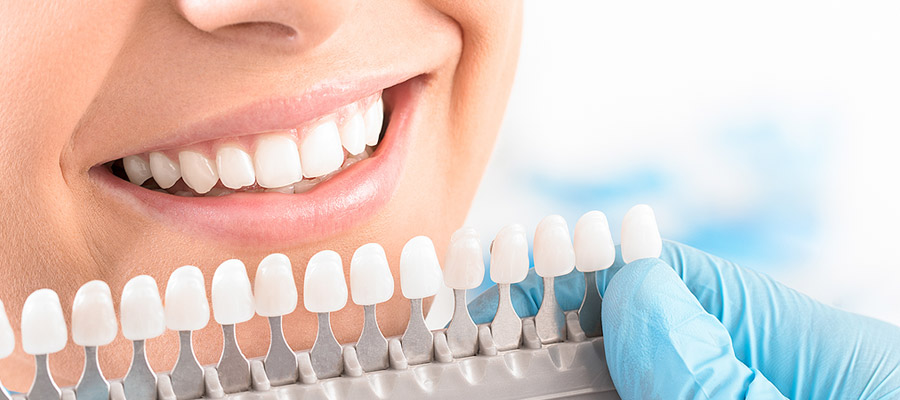
Porcelain Crowns
When a tooth has broken, has a large area of decay or is cracked, Dr. Larsen may prescribe a Porcelain Crown as your best option for ensuring that you have a long-lasting, natural-looking restoration.
What is a Porcelain Crown?
A crown is a dental restoration that completely covers the existing tooth to protect it from further damage and is fabricated to look like the natural tooth. It is used when the existing tooth’s root is still strong but the surface has been compromised.
Why Use Porcelain for Crowns?
Dr. Larsen will use an all-porcelain crown particularly on your front teeth where it best simulates the appearance of a natural tooth’s color, luster and translucency. Previously the best available solution was called a “PFM crown”, which stands for Porcelain Fused to Metal. While still appropriate for back teeth, the PFM material is not translucent and results in a less-natural appearance in your smile.
The upper picture on the right shows an example of this traditional restoration. In the past, a metal foundation was necessary to give the grown enough strength to hold up over time. PFM crowns are very strong and functional, but have major esthetic drawbacks if a natural look is the goal.
In this example, you can see the dark line around the tooth near the gum line. This occurs over time as the gum naturally recedes. Also because of the metal substructure, the PFM crown lacks the translucency that is seen in adjoining teeth.
The replacement all-ceramic crown is shown in the lower picture. This clearly demonstrates the advantages of an all-porcelain crown. It mimics the appearance of the natural teeth and becomes indistinguishable from the adjoining teeth.
Placement of a Porcelain Crown
Generally you can expect two dental appointments for the placement of a porcelain crown. During the first visit, the exterior surface of the tooth is prepared by shaving off the decay and shaping the remaining tooth to receive the crown to be bonded. After preparation of the tooth, an impression is made to provide the dental lab with the shape of the remaining tooth. Dr. Larsen will also create a ‘temporary’ or provisional tooth that will simulate the final crown during the 1-2 weeks that the lab is custom sculpting your porcelain crown.
When the porcelain crown is received back from the lab, Dr. Larsen will use dental bonding technology to mount it permanently in place. For a natural look and long-term results, dental bonding requires a highly skilled dentist. Dr. Larsen is both an artist and dentist when it comes to creating a natural-looking smile.
